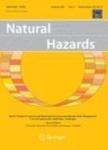版权所有:内蒙古大学图书馆 技术提供:维普资讯• 智图
内蒙古自治区呼和浩特市赛罕区大学西街235号 邮编: 010021

作者机构:Duy Tan Univ Fac Civil Engn Inst Res & Dev R 8093 Quang Trung Da Nang 550000 Vietnam Univ Coll Southeast Norway Dept Business & IT Geog Informat Syst Grp Gulbringvegen 36 N-3800 Bo I Telemark Norway
出 版 物:《NATURAL HAZARDS》 (Nat. Hazards)
年 卷 期:2018年第92卷第3期
页 面:1871-1887页
核心收录:
学科分类:07[理学] 0708[理学-地球物理学] 0815[工学-水利工程] 0706[理学-大气科学]
主 题:Shallow landslide Rainfall-induced Gene expression programming Geographical information system Artificial intelligence
摘 要:Shallow landslide represents one of the most devastating morphodynamic processes that bring about great destructions to human life and infrastructure. Landslide spatial prediction can significantly help government agencies in land use and mitigation measure planning. Nevertheless, landslide spatial modeling remains a very challenging problem due to its inherent complexity. This study proposes an integration of geographical information system (GIS) and gene expression programming (GEP) for predicting rainfall-induced shallow landslide occurrences in Son La Province, Vietnam. A landslide inventory map has been constructed based on historical landslide locations. Furthermore, a dataset which features 12 influencing factors is collected using GIS technology. Based on the GEP algorithm and the collected dataset, an empirical model for spatial prediction of the shallow landslide has been established by means of natural selection. The predictive capability of the model has been verified by the area under the curve calculation. Experimental results point out that the newly proposed approach is a promising tool for shallow landslide prediction.